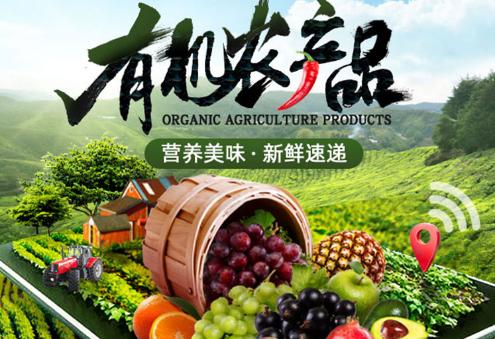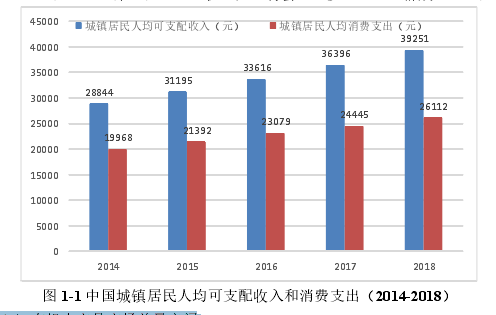摘 要
有机农业作为一种新型农业生产方式,近些年在我国发展尤为迅速,受到消费者的青睐。有机农产品是根据有机农业原则和有机农产品生产方式及标准生产、加工出来的,并通过有机食品认证机构认证的农产品。近些年来,我国有机农产品市场规模迅速扩大,有机农场的种植面积和有机农产品的产量也逐年增长。但是有机农业在快速发展的过程中也面临着严峻的问题和挑战,尤其是随着近些年互联网的发展和社区团购的兴起,有机农产品和普通农产品的竞争日趋激烈,众多有机农场呈现出大幅亏损的状态,消费者对有机农产品“叫好不叫座”的现象大面积存在。如何在有机农产品和普通农产品共同竞争的前提下设计有机农产品供应链的激励机制,进一步推动有机农业发展,已经成为能否持续推动我国有机农产品产业健康可持续发展的首要问题。
本文通过分析有机农产品供应链的现实情形,构建数理模型化来探讨有机农产品和普通农产品之间的激励竞争,并进一步分析激励机制对有机农产品供应链运作的影响。
首先,缺乏相关激励机制时,有机农产品并没有在市场上形成很大市场,普通农产品在市场仍占据主导地位,有机农场和有机精品超市也并不常见。然后,在存在消费者社会责任意识的情形下,政府对有机农产品进行进一步的宣传与引导,政府对有机农业的发展推出一系列相关激励政策,有机农业迎来快速发展,有机农产品的市场规模进一步扩大。最后,有机农产品和普通农产品在市场中竞争愈发激烈,有机农产品的不同竞争策略对有机农产品供应链有着重要影响,同时政府对有机农业的激励机制也日趋多样化,包括对消费者宣传引导,对农户的补贴等等,那么不同的激励机制将会对有机农产品供应链产生怎样的影响?有机农产品和普通农产品的竞争在不同激励机制下又有何变化?
随着有机农业发展,有机农产品市场规模的逐步扩大,单一有机农产品将很难满足消费者日趋多样化、差异化的需求,越来越多的有机农场和有机精品超市将会出现,有机农场在和普通农场的竞争又将发生怎样的变化?在消费者社会责任意识的激励和政府补贴的激励下,有机农产品供应链的运作又将发生怎样的变化?本文通过对以上问题进行研究分析,得出以下主要结论:
(1)在缺乏激励机制的情形下,当有机农产品和普通农产品都通过同一普通超市销售时,两种农产品的批发价相对较低,零售价相对较高,而当有机农产品通过有机精品超市单独销售时,两种农产品的批发价相对较高,零售价相对较低;与有机农产品和普通农产品都通过同一普通超市销售时相比,有机农产品通过有机精品超市单独销售时,有机农场和普通农场的利润较高,零售端的利润较低。
(2)在存在消费者社会责任意识的情形下,消费者的社会责任意识和有机农产品的批发价、零售价成正比,且有机农产品的批发价与零售价之间的价格差会随着消费者社会责任意识的提升而扩大;消费者的社会责任意识和普通农产品的批发价、零售价成反比,且普通农产品的零售价与批发价之间的价格差会随着消费者社会责任意识提升而减少;有机农产品的需求和消费者的社会责任意识成正比,而普通农产品的需求和消费者的社会责任意识成反比;有机农场的利润和消费者的社会意识成正比,普通农场的利润和消费者社会责任意识成反比,且两者的利润差在消费者的社会责任意识大于某一阈值后会逐渐拉大。
(3)在存在政府补贴的情形下,政府单位有机农产品补贴和有机农产品的批发价、零售价成反比,且有机农产品的批发价与零售价之间的价格差会随着政府单位有机农产品补贴力度的加大而扩大;政府单位有机农产品补贴和普通农产品的批发价、零售价成反比,但是两者的价格差在不同的销售策略下呈现出来的趋势不同,当有机农产品和普通农产品在同一普通超市销售时,普通农产品的批发价与零售价之间的价格差会随着政府单位有机农产品补贴力度的加大而扩大,而当有机农产品通过有机精品超市独立销售时,普通农产品的批发价和零售价之间的价格差会随着政府单位有机农产品补贴力度的加大先减小,而当补贴力度大于某一阈值时,两者价格差再扩大;本文研究结论表明,有机农产品和普通农产品的竞争激励,各参与主体在有机农业不同发展阶段应制定相应的运营策略,有机农场可根据现实情况来选择合适的销售模式。

政府及相关平台也应该认真履行监督职责,完善相关法律法规,加大对有机农产品造假的惩罚力度,加强对真正发展有机农业的相关农户的补贴力度,建立绿色新型农业标准,加强对有机农产品的宣传引导。对消费者而言,在政府对有机农产品的大力宣传引导下以及相关政策的出台下,消费者需提高自身的社会责任意识,履行社会责任,利用自身资源帮助有机农产品进行日常宣传,加强消费者与有机农场的利益联结机制,同时消费者可以自发组织绿色消费联盟,提高有机农产品的市场活跃度,进一步拓展有机农产品市场,增强消费者在市场中的价格谈判能力,维护消费者利益。
关键词 : 农产品供应链;激励机制;竞争策略;社会责任意识;政府补贴。
Abstract
As a new type of agricultural production mode, organic agriculture has developed rapidlyin China in recent years and is favored by consumers. Organic agricultural products areproduced and processed according to the principles of organic agriculture and the productionmethods and standards of organic agricultural products, and are certified by the organic foodcertification agency. In recent years, the market scale of organic agricultural products in Chinahas expanded rapidly, and the planting area of organic farm and the output of organicagricultural products have also increased year by year. However, organic agriculture is alsofacing severe problems and challenges in the process of rapid development, especially with thedevelopment of the Internet and the rise of community group buying in recent years, thecompetition between organic agricultural products and ordinary agricultural products isbecoming increasingly fierce, many organic farms are showing a state of substantial loss, andthe phenomenon of "good but not good" for organic agricultural products exists in a large area.
How to design the incentive mechanism of organic agricultural products supply chain under thepremise of common competition between organic agricultural products and ordinaryagricultural products, and further promote the development of organic agriculture, has becomethe primary problem of sustainable development of China's organic agricultural productsindustry.
This paper analyzes the reality of organic agricultural products supply chain, constructsmathematical model to explore the incentive competition between organic agricultural productsand ordinary agricultural products, and further analyzes the impact of incentive mechanism onthe operation of organic agricultural products supply chain. First of all, when there is no relevantincentive mechanism, organic agricultural products do not form a large market in the market,ordinary agricultural products still occupy a dominant position in the market, and organic farmsand organic supermarkets are not common. Then, in the case of consumers' social responsibilityconsciousness, the government carries out further publicity and guidance on organicagricultural products, and the government puts forward a series of relevant incentive policiesfor the development of organic agriculture. Organic agriculture ushers in rapid development,and the market scale of organic agricultural products is further expanded. Finally, thecompetition between organic agricultural products and ordinary agricultural products isbecoming more and more fierce in the market. The different competition strategies of organicagricultural products have an important impact on the supply chain of organic agriculturalproducts. At the same time, the government's incentive mechanism for organic agriculture isbecoming more and more diversified, including publicity and guidance for consumers,subsidies for farmers and so on, How will different incentive mechanisms affect the supply chain of organic agricultural products? What are the changes of competition between organicagricultural products and ordinary agricultural products under different incentive mechanisms?
With the development of organic agriculture and the gradual expansion of the market scale oforganic agricultural products, it will be difficult for a single organic agricultural product to meetthe increasingly diversified and differentiated needs of consumers. More and more organicfarms and organic boutique supermarkets will appear. What will happen to the competitionbetween organic farms and ordinary farms? How will the operation of organic agriculturalproducts supply chain change under the incentive of consumers' social responsibility andgovernment subsidies? Based on the analysis of the above problems, the main conclusions areas follows(1) In the absence of incentive mechanism, when both organic agricultural products andordinary agricultural products are sold through the same general supermarket, the wholesaleprice of the two kinds of agricultural products is relatively low and the retail price is relativelyhigh. When organic agricultural products are sold through the organic boutique supermarketalone, the wholesale price of the two kinds of agricultural products is relatively high and theretail price is relatively low; Compared with the sales of organic agricultural products andordinary agricultural products through the same ordinary supermarket, the profits of organicfarm and ordinary farm are higher, while the profits of retail end are lower when organicagricultural products are sold through the organic supermarket alone.
(2) In the case of consumers' social responsibility consciousness, consumers' socialresponsibility consciousness is directly proportional to the wholesale price and retail price oforganic agricultural products, and the price difference between the wholesale price and retailprice of organic agricultural products will expand with the improvement of consumers' socialresponsibility consciousness; Consumers' sense of social responsibility is inverselyproportional to the wholesale price and retail price of ordinary agricultural products, and theprice difference between retail price and wholesale price of ordinary agricultural products willdecrease with the improvement of consumers' sense of social responsibility; The demand fororganic agricultural products is directly proportional to the social responsibility consciousnessof consumers, while the demand for ordinary agricultural products is inversely proportional tothe social responsibility consciousness of consumers; The profit of organic farm is directlyproportional to the social consciousness of consumers, while the profit of ordinary farm isinversely proportional to the social responsibility consciousness of consumers, and the profitdifference between the two will gradually widen when the social responsibility consciousnessof consumers is greater than a certain threshold.
(3) In the case of government subsidies, the government subsidies for organic agriculturalproducts are inversely proportional to the wholesale and retail prices of organic agriculturalproducts, and the price difference between the wholesale and retail prices of organic agricultural products will expand with the increase of government subsidies for organic agriculturalproducts; The government subsidies for organic agricultural products are inversely proportionalto the wholesale price and retail price of ordinary agricultural products, but the trend of theprice difference between the two is different under different marketing strategies, The pricedifference between wholesale price and retail price of ordinary agricultural products willexpand with the increase of government subsidies for organic agricultural products. Whenorganic agricultural products are sold independently through organic supermarket, the pricedifference between wholesale price and retail price of ordinary agricultural products will firstdecrease with the increase of government subsidies for organic agricultural products, When thesubsidy is greater than a certain threshold, the price difference between the two increases; Theconclusion of this study shows that, in order to promote the competition between organicagricultural products and ordinary agricultural products, all participants should formulatecorresponding operation strategies in different development stages of organic agriculture, andorganic farms can choose the appropriate sales mode according to the actual situation. Thegovernment and relevant platforms should also conscientiously perform their supervision duties,improve relevant laws and regulations, increase the punishment for the fraud of organicagricultural products, strengthen the subsidies for farmers who really develop organicagriculture, establish new green agricultural standards, and strengthen the publicity andguidance of organic agricultural products. For consumers, under the guidance of thegovernment's vigorous publicity of organic agricultural products and the introduction ofrelevant policies, consumers need to improve their awareness of social responsibility, fulfilltheir social responsibility, use their own resources to help organic agricultural products carryout daily publicity, strengthen the interest connection mechanism between consumers andorganic farms, and at the same time, consumers can spontaneously organize green consumptionalliance, We should increase the market activity of organic agricultural products, further expandthe market of organic agricultural products, enhance consumers' ability of price negotiation inthe market, and safeguard consumers' interests.
Keywords : Agricultural Products Supply Chain; Incentive Mechanism; CompetitiveStrategy; Social Responsibility Consciousness; Government Subsidies。
第一章 绪论
1.1、研究背景和研究意义。
1.1.1、研究背景。
(1)人民群众越来越向往高品质生活。
近年来,随着我国人民生活水平的提高,消费者对农产品品质的要求也越来越高,优质、安全、健康的绿色有机农产品逐渐受到消费者的青睐。尤其是十八大以来,我国的食品安全问题得到持续改善,食品安全工作也取得显着成效,人民群众所担心的食品安全问题有了明显改进。但是,我国在食品安全领域仍然面临着诸多问题与挑战,食品安全问题仍然时有发生,从“地沟油”到“毒奶粉”,从“速生鸡”到“塑化剂白酒”,从“色素造假土鸡蛋”到“硫磺熏制毒生姜”。这些令消费者担忧的食品安全问题,使得广大消费者对绿色、健康、安全食品的需求越来越迫切[1]。
党的十九大报告指出了中国发展新的历史方位——“中国特色社会主义进入了新时代”,我国社会主要矛盾已经转化为人民日益增长的美好生活需要和不平衡不充分的发展之间的矛盾。尤其是近些年来,我国经济快速发展,人民生活水平显着提高,人均可支配收入日渐提升。图 1-1 表明 2014-2018 这五年间,我国城镇居民人均可支配收入和消费支出都呈显着提升趋势,这说明我国人民的生活水平不断提高,从而对更高品质生活的追求也不断提升[2][3]。有数据显示,我国的中等收入群体规模为全球最大,巨大的消费能力将会成为我国经济发展持续健康发展有力支撑点。所以,随着我国将进入全面小康时代,人民生活水平的显着提升,人民群众的消费水平和消费能力的逐渐转变,人民群众对食品安全问题越来越重视,有机农产品将会进一步进入人民群众的日常生活。

(2)有机农产品市场前景广阔。
截至到2018年,全球约186个国家拥有有机农业耕地,有机农业耕地面积达7150万公顷,其市场规模已达967亿欧元,有机农业的生产者更是从1999年的20万人迅速增加到2018年的280万人[4]。根据国际有机农业运动联盟和瑞士有机农业研究所共同发布的《2018年世界有机农业概括》显示,2016年,美国是全球有机农业产品的最大市场,销售达到389亿欧元,德国和法国分别位列二三位,销售额分别为97亿欧元和67亿欧元,中国则位居第四位,有着59亿欧元的销售额。
2018年,美国仍拥有全球最大的有机农业市场规模,其市场规模达到406亿欧元,紧随其后的是德国的109亿欧元和法国的91亿欧元[5]。在西方发达国家中瑞士和丹麦是人均在有机食品上花费最多的两个国家,人均花费分别为274欧元和227欧元,而中国人均在有机食品方面的花费仅为4.2欧元(换算成人民币约33元),不及世界人均有机食品花费11.3欧元的一半,由此可见我国有机农业仍具有较大发展空间,市场潜力巨大[6]。
【由于本篇文章为硕士论文,如需全文请点击底部下载全文链接】
1.1.2、研究意义
1.2、国内外研究现状.
1.2.1、农产品供应链的运作研究
1.2.2、渠道竞争的策略研究
1.2.3、供应链管理中的激励机制研究
1.2.4、简要评论.
1.3、研究方法与技术路线.
1.3.1、研究方法,
1.3.2、技术路线.
1.4、研究内容与创新点.
1.4.1、研究内容
1.4.2、创新
第二章 相关理论与方法概述
2.1、主从博弈理论相关概述,
2.2、农产品供应链相关概念
2.2.1、农产晶供应链的界定及特征
2.2.2、农产品供应链的运作模式
2.3、供应链激励相关理论.
2.3.1、契约理论
2.3.2、激励理论.
第三章 缺乏激励机制的有机农产品供应链运作机制研究
3.1、问题描述
3.2、模型构建与分
3.2.1、有机农产品通过普通超市销售.
3.2.2、有机农产品通过有机精品超市销售
3.3、数值仿真与结果分析.
3.4、本章小结,
第四章 考虑消费者社会责任意识的有机农产品供应链运作机制研究
4.1、问题描述
4.2、模型构建与分析.
4.2.1、有机农产品通过普通超市销售.
4.2.2、有机农产品通过有机精品超市销售
4.3、数值仿真与结果分析.
4.4、本章小结
第五章 考虑政府补贴的有机农产品供应链运作机制研究
5.1、问题描述
5.2、模型构建与分析.
5.2.1、有机农产品通过普通超市销售
5.2.2、有机农产品通过有机精品超市销售
5.3、数值仿真与结果分析,
5.4、本章小结
第六章 主要结论
近年来,新型有机农业在我国发展迅速,有机农产品在市场中越来越受到消费者青睐。然而由于有机农产品供应链运作的复杂性和不同类型农产品在市场竞争的激烈性,有机农业在发展过程中遇到一系列的问题与挑战。目前,对有机农产品供应链的研究也多以实证分析为主,且该方面文献总体偏少,引入激励机制的有机农产品供应链运作机制尚不明确。因此,深入研究探讨引入激励机制的有机农产品供应链运作机制并比较不同激励机制的优化策略,能够为有机农产品供应链平稳发展提供更加有效的理论指导与建议。
本文综合运用斯塔克尔伯格博弈,激励理论、行为理论和数值仿真等方法,对引入激励机制的有机农产品供应链运作机制、不同类型农产品在市场中的竞争渠道展开分析与研究,充分考虑不同激励机制对有机农产品供应链和不同类型农产品竞争策略的影响。
研究得到以下重要管理启示:
(1)在缺乏相关激励机制的情形下。当有机农产品和普通农产品都通过普通超市销售时,两种农产品的批发价都会低于有机农产品通过精品有机超市单独销售时的批发价,但是两种农产品的零售价却要高于有机农产品通过精品有机超市单独销售时两种农产品的零售价;此时,有机农场和普通农场利润较低,而当有机农产品通过精品有机超市单独销售,有机农场和普通农场利润较高;有机农产品和普通农产品都通过普通超市售卖时零售端的利润要大于有机农产品通过有机精品超市单独销售时零售端的利润。
(2)在存在消费者社会责任意识的情形下。消费者的社会责任意识和有机农产品的批发价与零售价都会成正相关,且有机农产品的批发价与零售价之间的价格差会随着消费者社会责任意识的提升而扩大;消费者的社会责任意识和普通农产品的批发价与零售价都成负相关,且普通农产品的零售价与批发价之间的价格差会随着消费者社会责任意识提升而减少;普通农产品的需求和消费者的社会责任意识成反比,而有机农产品的需求和消费者的社会责任意识成正比;有机农场的利润和消费者的社会意识成正比,普通农场的利润和消费者社会责任意识成反比,且两者的利润差在消费者的社会责任意识大于某一阈值后会逐渐拉大。
(3)在存在政府补贴的情形下。政府单位有机农产品补贴和有机农产品的批发价、零售价都成反比,且有机农产品的批发价与零售价之间的价格差会随着政府单位有机农产品补贴力度的加大而扩大;政府单位有机农产品补贴和普通农产品的批发价、零售价都成反比,但是两者的价格差在不同的策略下呈现出的趋势不同,在 RR 策略下普通农产品的批发价与零售价之间的价格差会随着政府单位有机农产品补贴力度的加大先减小,而当补贴力度大于某一阈值时,两者价格差再扩大,而在 R策略下普通农产品的批发价与零售价之间的价格差会随着政府单位有机农产品补贴力度的加大而扩大;普通农产品的需求和政府单位有机农产品补贴成反比,而有机农产品的需求和政府单位有机农产品补贴成正比。有机农场的利润和政府单位有机农产品补贴成正比,而普通农场的利润和政府单位有机农产品补贴则呈现出不同的趋势,在 RR 策略下,普通农场的利润和政府单位有机农产品补贴力度成反比;R策略下,普通农场的利润会随着政府单位有机农产品补贴力度的加大先减少,而当补贴力度大于某一阈值则会上升。
随着有机农业的不断发展,有机农产品的市场也出现不同的新业态:订单农业模式、有机精品超市模式、平台连接模式,各模式的供应链成员都需要对各参与主体在有机农业不同发展阶段应制定相应运营策略,有机农场可根据现实情况来选择合适的销售策略,有机农产品供应链需要借助互联网、大数据等技术手段,提高有机农产品供应链运作的高效性、市场需求的准确性,通过大数据做到有机农产品的可追溯性,保证有机农产品的有机属性,让大众消费者对有机农产品有更全面的了解和更充分的信任。政府及相关平台也应该认真履行监督职责,完善相关法律法规,加大对有机农产品造假的惩罚力度,加强对真正发展有机农业的相关农户的补贴力度,建立绿色新型农业标准,加强对有机农产品的宣传引导。对消费者而言,在政府对有机农产品的大力宣传引导下以及相关政策的出台下,消费者需提高自身的社会责任意识,履行社会责任,利用自身资源帮助有机农产品进行日常宣传,加强消费者与有机农场的利益联结机制,实现消费者与有机农场的进一步衔接,让有机农产品消费者合理分享有机农产品自身特征,同时消费者可以自发组织绿色消费联盟,提高有机农产品的市场活跃度,进一步拓展有机农产品市场,增强消费者在市场中的价格谈判能力,维护消费者利益。
本文上述结论能够对基于激励机制的有机农产品供应链起到理论指导作用,促进各供应链成员协调合作,实现合作共赢,为有机农业的健康持续发展提供政策建议。
参考文献
[1] 卫岗乳业现“奶农倒奶”原奶过剩引利益之争? [N]. 中国经营报, 2018-02..
[2] 中国经济网.超过4亿人中国拥有全球规模最大中等收入群体[EB/OL].2019-01-21,.
[3]“十三五”时期已摘帽贫困县企业销售收入年均增长14. 6%6[N].中国产业经济信息.网,2021-02-28,.
[4] FiBL & IFOAML - ORGANICS INTERNATIONA: The world of organi c agricultural,Statistics and Emerging Trends, 2020.
[5] Katsarova, I. Organic food: Helping EU consumers M ake an Informed Choice. Briefing ofEurop ean Parli ament, 2018.
[6] Useit 知识库. FiBL: 2018 年世界有机农业概况与趋势预测[EB/OL] 2018-07-31.
[7] 抓好“三农”领域重点工作确保如期实现全面小康一- 中央农办主任、农业农村部部长韩长赋就2020 年中央一号文件答记者问[N].中华人民共和国农业农村部,
[8] 中央一号文件再聚焦:补齐”三农”短板挖掘发展潜力,[N].华人民共和国农业农村部,
[9]广东省人民政府办公厅关于加快转变农业发展方式的实施意见[N].广东省人民政府办公厅, 2016-07-14
[10]浙江省农业厅关于扎实做好2017年农业农村经济工作的意见[N].浙江省农业厅,
[11] 江苏省农业农村厅:《关于加快推进农业绿色发展的实施意见》解读[N].江苏省人民政府, 2018- 12-07.
[12].上海市人民政府办公厅关于印发《.上海市都市现代绿色农业发展三年行动计划(2018-2020年)》的通知[N]. 上海市人民政府,2018.
[13] 董欢,郑晓冬,方向明.社区支持农业的发展:理论基础与国际经验[J].中国农村经济,2017
[14]中国产业调研网.中国有机食品市场调研与发展趋势预测报告[M],2020.
[15] 新浪财经有机农业陷四大困境:一农户8年亏2000万,靠卖房补窟窿[EB/OL].2017-08-25.
[16] 伏洪勇.社区支持农业“产- -销”互动中的信任问题一基于信任博弈的分析[]西南政法大学学报,2017,19 (5): 95-103.
[17]农业农村部答复加大有机农产品补贴力度有关建议.[N]..
[18] 舒斯亮,柳键.政府补贴模式对生物农产品供应链决策的影响[J].华东经济管理, 2017, 31 (12) :134-139.
[19] Widodo, K H, Nagasawa H, Morizawa, K, Ota, M, A perniodi cal fowering harvestngmodel for delivering agri cultural fresh pro ducts[J]. European Jourmal of Operational Research,2006, 170, 24-43.
[20] Alexander, P. Hermann, L. C, Benjamin. B. Food consumption di et shifts and associatednon-CO2 greenhouse gases from agricultural production[J]. Global Environmental Change, 20 10,20, 451 -462.
[21] Tang, CS,Wang, YL, Zhao, M. The implication of utilizing market information andadopting agricultural advice for farms in developing countries[J]. Production and Op erati onsManagement, 20 15,24(8), 1197-1215.
[22] Agbo M, Rousseli ere D,Sal anie J Agri cultural marketing coop eratives with direct selling:A cooperative non coop er ative game[J]. Journal of Economic Behaviour & Organization,2015, 109: 56-71.
[23] 叶飞林强销售价格受产出率影响下订单农业的定价模型[J]系统工程学报,2015,30(3) :417-430.
[24]周礼南,周根贵,綦方中,曹柬考虑消费者有机产品偏好的生鲜农产品供应链均衡研究[J].系统工程理论与实践,2019, 39(02) :360-371.
[25] Cai X, Chen J, Xiao Y, Xu X. Optimization and coordinati on of fresh pro dluct supply chainswith freshness-keeping effort[J]. Production & Op erations Management, 2010, 19(3): 261-278.





